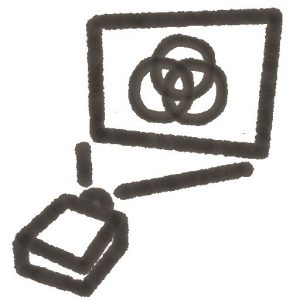For the firs t entry of the new year, I choose to travel a bit further along the road we were on at the end of 2018. This is in part because it touches a subject that has long been close to my heart, and also because there is a good deal more to say about how our misuse of presentation software makes meetings tedious for attendees.
t entry of the new year, I choose to travel a bit further along the road we were on at the end of 2018. This is in part because it touches a subject that has long been close to my heart, and also because there is a good deal more to say about how our misuse of presentation software makes meetings tedious for attendees.
Indeed, some of what I have seen in my recent client visits has caused me to reflect on the poor quality of many—even most—of the slide presentations I have seen over the past two decades.
Moreover, I am staying on this theme because a number of people have reacted to one of my reflections from last time—that the problem is not PowerPoint per se, but rather the way we use it. So, that is a point I would like to address here as well.
The feeling that overexposure to slide-based discourse is a root cause of corporate boredom is certainly a prevalent one. A simple search for the phrase “death by PowerPoint” yields some interesting results, including many tirades from people who complain about having had to sit through countless monotonous meetings and presentations in their workplaces.
In addition, a cursory survey of my friends and colleagues produced pertinent anecdotes from nearly everyone I queried, similar tales of deathly slideshow tedium. At times, these first-hand accounts were laden with emotion, ranging from heartfelt anger to acute frustration.
Nonetheless, I have long maintained that it is quite possible to do an inspiring presentation using software and slides. The basic problem, as I see it, is not whether or not we use PowerPoint when we address our listeners. Rather, I often take issue with the way meetings are run in many of the organizations I have seen, and with the way speakers are instructed to address their audiences.
As a case in point, last month one of my clients—a very successful, profitable and respected enterprise—asked me to observe and critique a part of their annual planning meeting. So, I listened for nearly three hours as leaders of various departments presented their overview of 2018, followed by their departmental strategic plan for 2019.
Each manager had been charged with “presenting the results and analyzing your group’s opportunities and potential dangers looking forward”. Most of them began by putting data on the big screen in the front of the room, and then discussing “the numbers” together with the other people in the audience.
Every speaker followed an easily recognizable general template, each one opening with something roughly like this: “So, let’s take a look at the figures. As you can see, sales for the 4th quarter were down 2.4% as compared to last year, but profit margins held strong…”. Then, the speaker tended to follow closely the flow laid out on the slide, reading through data or bullet points.
As I watched and listened, I was left with the distinct impression that there was a certain format and behavior expected from the speakers. And, while I do not wish to be overly critical, this structure creates a dynamic that tends to put distance between a speaker and an audience. Whenever an orator and the listeners turn their eyes to what is on a screen, it takes the group away from the conversation they should be sharing together.
On almost every occasion when I see this sort of exercise, I encounter similar issues, and I end up commenting more on the design of the session than on the presenters themselves.
So, what is my advice to companies who seek to avoid tedious group meetings? Whether or not the participants use slides in their speeches, we should give them guidelines that help bridge the distance between them and their audience.
While there are a number of ways to help accomplish this goal, I usually emphasize three. First, presenters should be encouraged to pay more attention to content than form. Second, they should think about giving people less information and more insight. And third, we can learn to use slides to facilitate the conversation with an audience rather than interrupt it.
Of course, I plan to amplify these concepts in a future post.
Image: Flickr user Peter Morville
